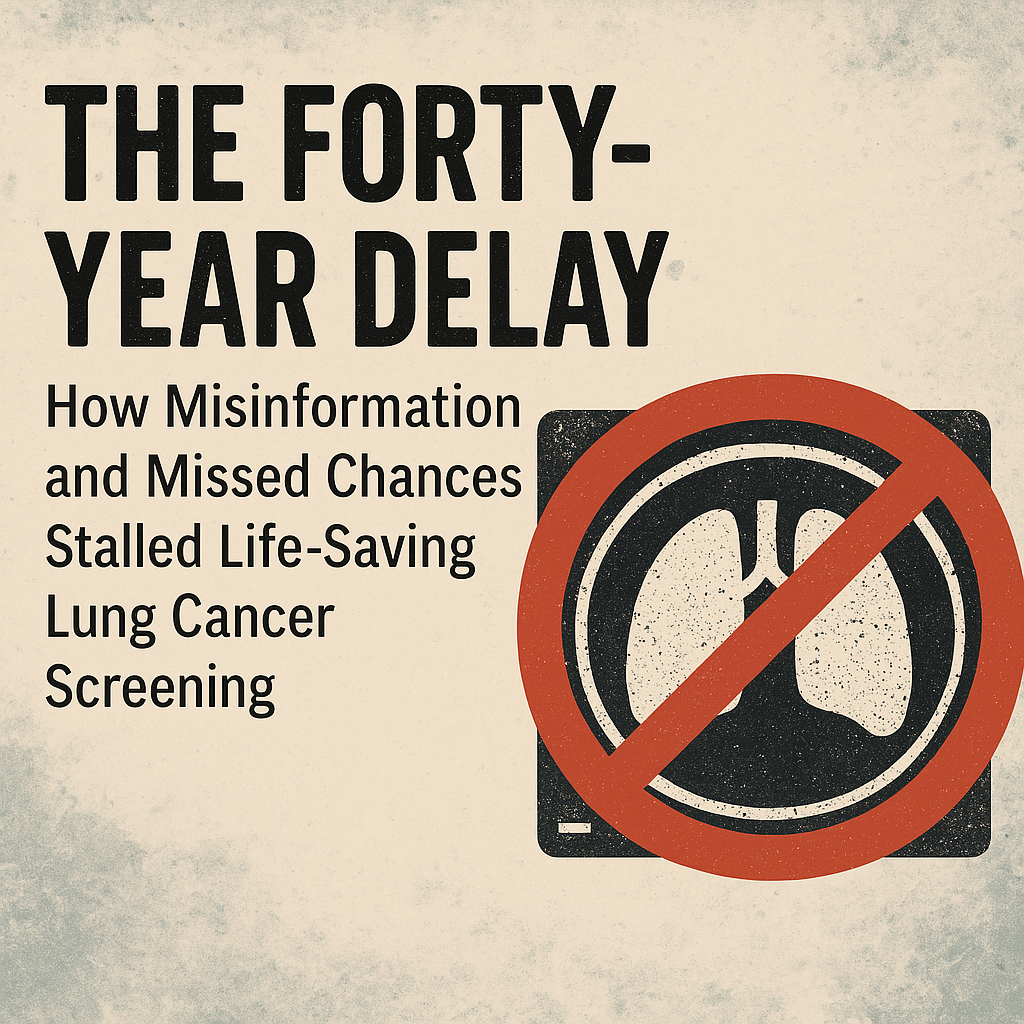The Tragic Delay of Life-Saving Lung Cancer Screening: A Four-Decade Saga of Missed Opportunities
Lung cancer, a relentless killer, has claimed countless lives over the decades. While effective screening methods have existed for years, their widespread adoption has been hampered by a confluence of misguided fears, bureaucratic inertia, and a stubborn resistance to compelling scientific evidence. This tragic delay has cost tens of thousands of lives that could have been saved had the medical community heeded the early warning signs and embraced the life-saving potential of low-dose CT screening. The story of lung cancer screening is a stark reminder of how ingrained misconceptions and flawed assumptions can obstruct the path of progress, even when lives hang in the balance.
The seeds of this protracted delay were sown in the 1970s, a time when lung cancer was reaching epidemic proportions, fueled by the widespread prevalence of smoking. Early radiographic studies hinted at the potential of early detection to improve survival rates. However, these initial findings were overshadowed by concerns about the potential harms of radiation exposure and the nascent concept of overdiagnosis – the detection of cancers that would never have caused symptoms or death. These fears, coupled with the perceived need for multiple randomized controlled trials (RCTs), effectively stalled the implementation of widespread screening programs. This hesitancy persisted despite the fact that by the early 1990s, advancements in CT technology offered significantly improved imaging capabilities, enabling the detection of much smaller lung nodules at an earlier, more treatable stage. This technological leap should have been a turning point, but the narrative of doubt had already taken root.
The 1990s witnessed groundbreaking research that definitively demonstrated the life-saving potential of CT screening. The Early Lung Cancer Action Program (ELCAP) revealed that CT scans could identify up to 80% of lung cancers at Stage 1, drastically increasing the likelihood of survival. Concurrent research in Japan further solidified the evidence, showcasing impressive five-year survival rates among patients whose cancers were detected through screening. These findings were subsequently corroborated by large-scale international trials, including the International Early Lung Cancer Action Program (IELCAP) and the National Lung Screening Trial (NLST), which demonstrated significant reductions in both lung cancer mortality and overall mortality. Yet, despite this mounting evidence, widespread adoption of CT screening remained elusive.
The resistance to CT screening persisted despite the overwhelming data, fueled by an entrenched skepticism and persistent misinformation. Critics clung to the outdated notion of overdiagnosis, arguing that many of the cancers detected through screening were indolent and would not have posed a threat to patients’ lives. This argument conveniently ignored the fact that many of these "overdiagnosed" cancers, if left untreated, would eventually progress and become life-threatening. Furthermore, fears surrounding radiation exposure continued to circulate, despite the minimal doses used in low-dose CT scans. These concerns, amplified by misleading early decision aids that overestimated the risks and underestimated the benefits of screening, created a climate of uncertainty and discouraged both physicians and patients from embracing this life-saving tool.
The consequences of this delay have been devastating. Even after the Centers for Medicare and Medicaid Services (CMS) finally approved coverage for CT lung cancer screening in 2015, uptake remained shockingly low, with only a small fraction of eligible individuals participating in screening programs. This low participation rate can be attributed to a complex interplay of factors, including the lingering misconceptions about overdiagnosis and radiation risks, the complexities of shared decision-making requirements, and the logistical challenges posed by the COVID-19 pandemic. The pandemic further exacerbated existing barriers, delaying screening appointments and discouraging individuals from seeking preventative care. The lure of alternative diagnostic methods, such as blood-based biomarkers, also diverted attention and resources, even though these methods lacked the sensitivity and practicality of CT imaging, particularly for large-scale screening programs.
The tragic irony is that the very arguments used to justify the delay of CT screening have now been repurposed to oppose its expansion to lower-risk populations, including never-smokers. The rising incidence of lung cancer in never-smokers, particularly women, underscores the urgent need for broader screening criteria. Yet, those who previously warned of overdiagnosis in heavy smokers now invoke the same argument to discourage screening in never-smokers, despite evidence suggesting that many screen-detected cancers in this population are indeed life-threatening. This paradoxical reasoning highlights the deeply ingrained resistance to change and the persistent influence of outdated assumptions. The medical community must confront these biases and embrace the evidence that early detection, through low-dose CT screening, saves lives.
The story of lung cancer screening is a cautionary tale of how scientific progress can be stifled by fear, misinformation, and bureaucratic inertia. For over four decades, a life-saving tool has been kept out of reach, resulting in a tragic loss of life that could have been prevented. The evidence is clear: low-dose CT screening is a safe and effective method for detecting lung cancer at an early stage, when treatment is most successful. It is time to overcome the legacy of misinformation and ensure that this life-saving technology is accessible to all who can benefit from it. The future of lung cancer prevention hinges on our ability to learn from the mistakes of the past and embrace the power of early detection.


